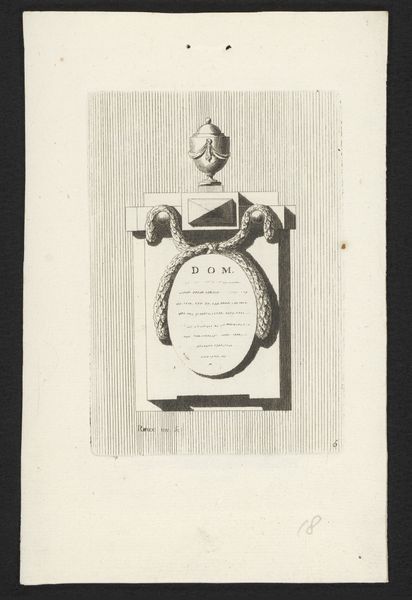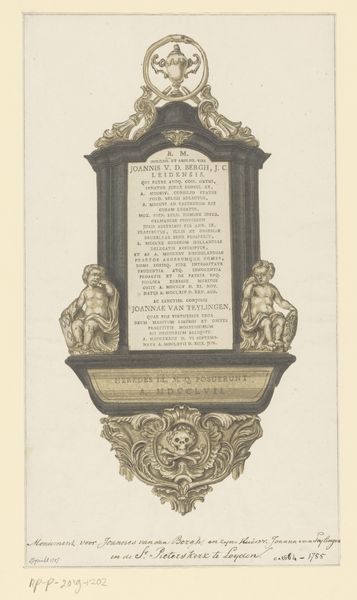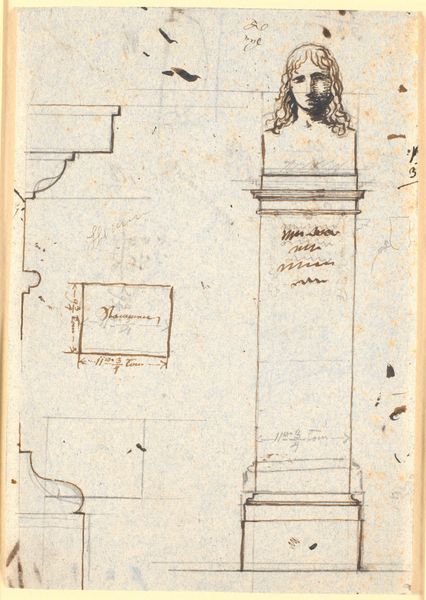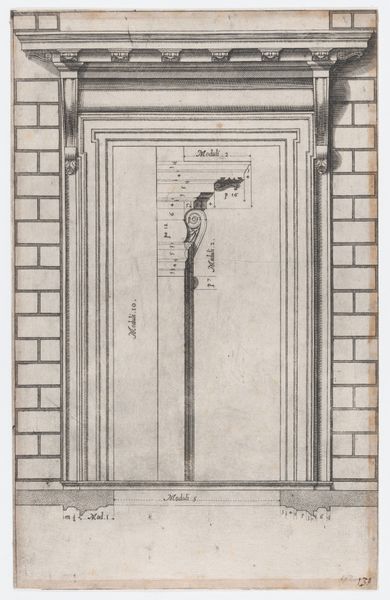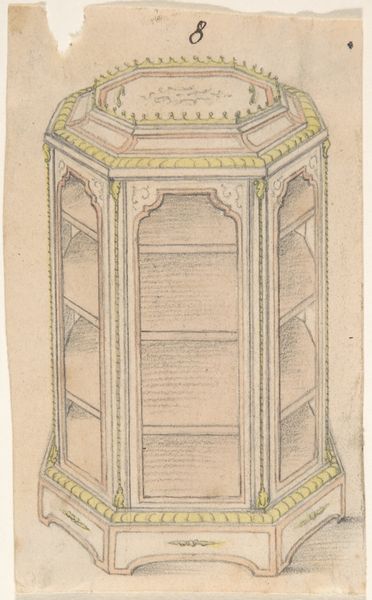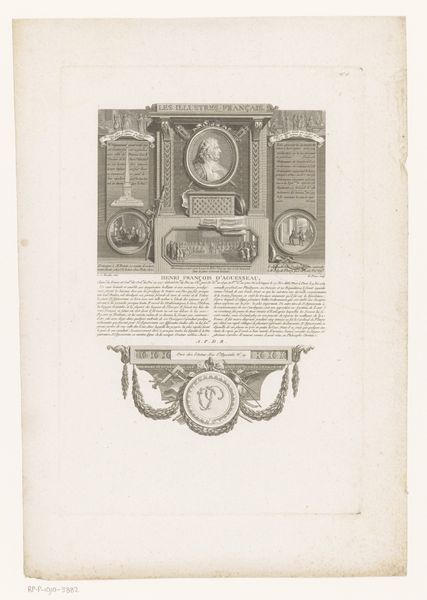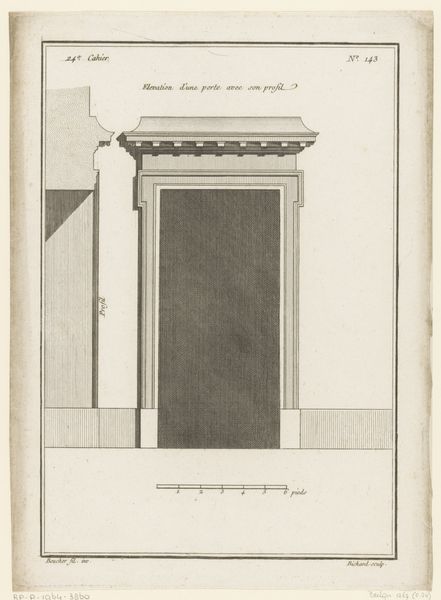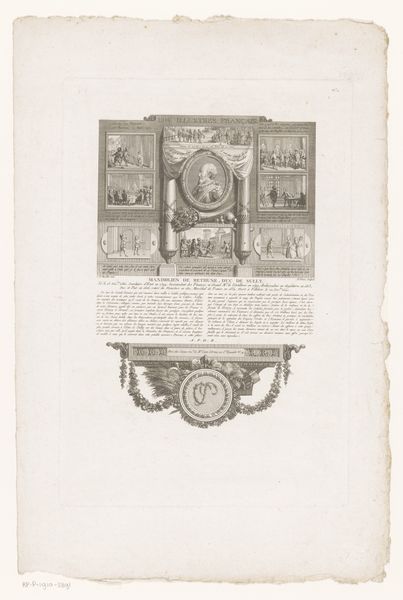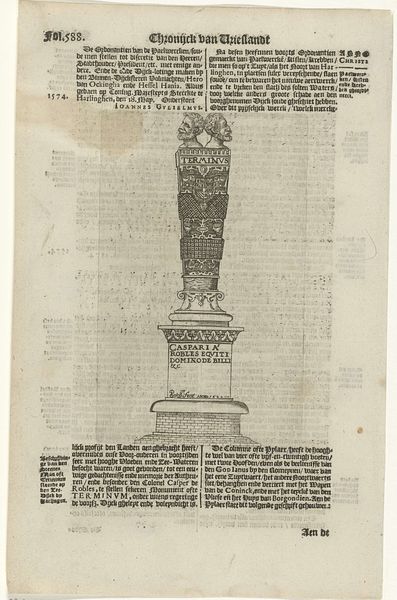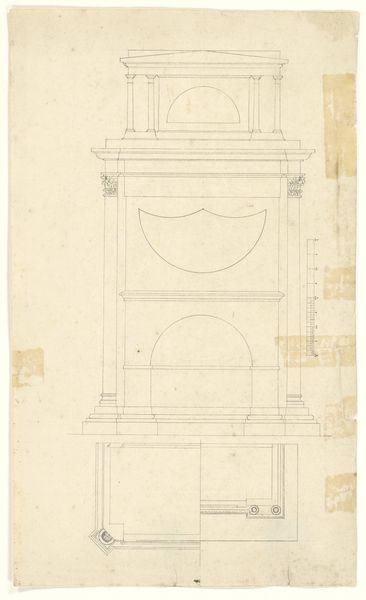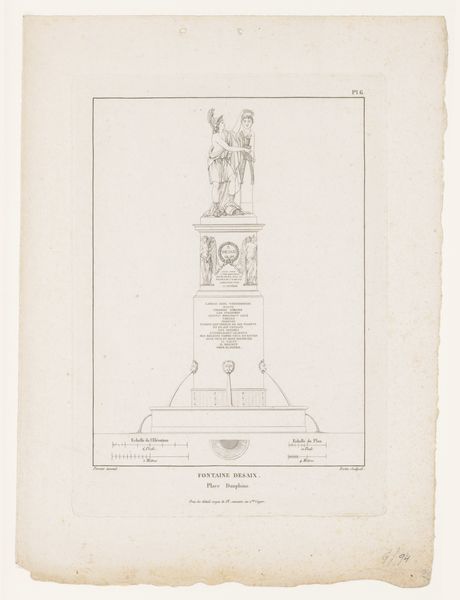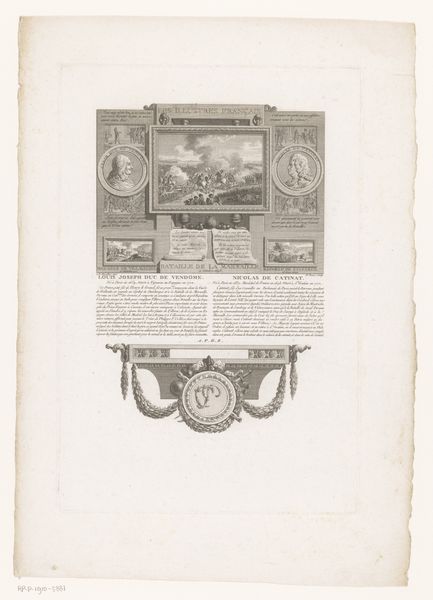
Udkast til et mindestykke, smykket foroven med et dødningehoved, forneden med et timeglas 1743 - 1809
0:00
0:00
drawing, paper, watercolor, ink, mural
#
drawing
#
neoclacissism
#
paper
#
watercolor
#
vanitas
#
ink
#
mural
#
watercolor
Dimensions: 214 mm (height) x 170 mm (width) (bladmaal)
Curator: Before us is "Udkast til et mindestykke, smykket foroven med et d\u00f8dningehoved, forneden med et timeglas", a drawing by Nicolai Abildgaard created between 1743 and 1809. It employs ink and watercolor on paper. Editor: My first impression is that it has a somber, contemplative air. The restricted color palette, predominantly shades of grey, creates a very muted visual atmosphere. The geometry gives it a stark formality too. Curator: Absolutely. It's essentially a vanitas composition, steeped in the Neoclassical style. The skull and hourglass are, of course, potent symbols. Skulls remind us of mortality. The hourglass is also another conventional image that suggests how short a time we actually occupy in this existence. Editor: The severe symmetry underscores that sense of inexorable fate, doesn't it? That central vertical axis is relentlessly unwavering. And the artist clearly defines and outlines the whole tomb with careful marks. There’s no fuzziness. Curator: I see it reflecting the Enlightenment's engagement with antiquity, and its concern with reason and order, yet inflected with the pre-Romantic fascination with the macabre. The architectural form recalls Greek and Roman monuments but is repurposed here to contemplate death. The text inscribed, though illegible to us, evokes a lost eulogy, personalizing what is universal. Editor: It’s interesting how the skull disrupts that perfect order. It’s as if a classical structure has been subtly violated or eroded. I think it humanizes what might otherwise feel rather cold. Curator: Precisely. The symbols speak across time. Even without knowing the exact text inscribed on the memorial, we instinctively understand its meaning – a reminder of life's fleeting nature. The work bridges the ancient world, the Enlightenment, and our own present. Editor: For me, this piece elegantly demonstrates how visual language can speak to our sense of mortality, the structural components almost diagrammatic, it leaves a profound impression. Curator: I agree. It's a powerful testament to Abildgaard’s artistic skill, synthesizing symbolic language into an emotive representation of remembrance.
Comments
No comments
Be the first to comment and join the conversation on the ultimate creative platform.
